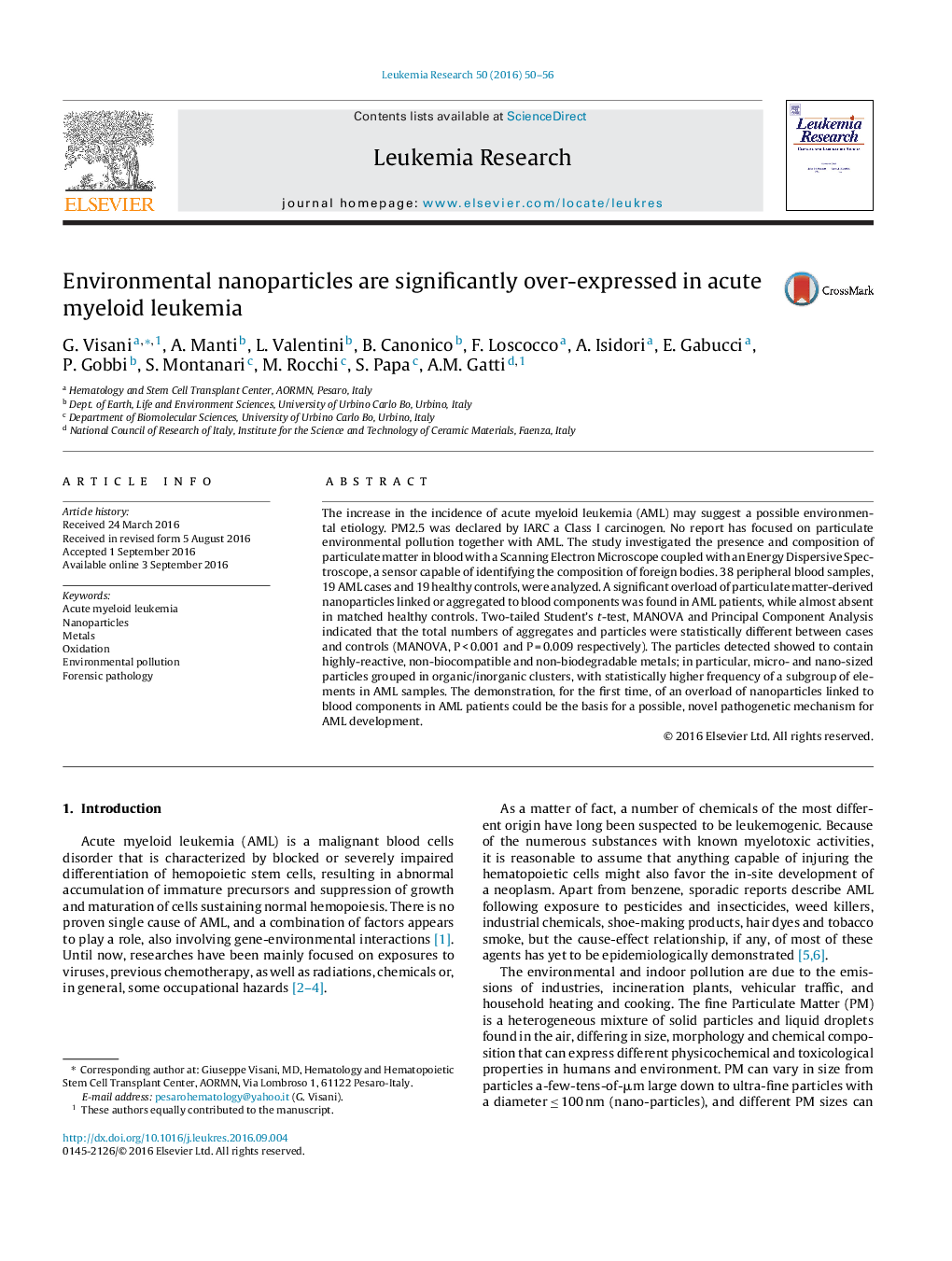| Article ID | Journal | Published Year | Pages | File Type |
|---|---|---|---|---|
| 5527854 | Leukemia Research | 2016 | 7 Pages |
â¢Increase in AML incidence suggest a possible environmental etiology.â¢PM-derived nanoparticles are linked to blood components in AML patients.â¢PM-derived nanoparticles are almost absent in matched healthy controls.â¢The aggregates of nanoparticles generate protein “corona” with plasma proteins around cells.â¢The protein “corona” generation could transform normal precursor into AML blasts.
The increase in the incidence of acute myeloid leukemia (AML) may suggest a possible environmental etiology. PM2.5 was declared by IARC a Class I carcinogen. No report has focused on particulate environmental pollution together with AML. The study investigated the presence and composition of particulate matter in blood with a Scanning Electron Microscope coupled with an Energy Dispersive Spectroscope, a sensor capable of identifying the composition of foreign bodies. 38 peripheral blood samples, 19 AML cases and 19 healthy controls, were analyzed. A significant overload of particulate matter-derived nanoparticles linked or aggregated to blood components was found in AML patients, while almost absent in matched healthy controls. Two-tailed Student's t-test, MANOVA and Principal Component Analysis indicated that the total numbers of aggregates and particles were statistically different between cases and controls (MANOVA, PÂ <Â 0.001 and PÂ =Â 0.009 respectively). The particles detected showed to contain highly-reactive, non-biocompatible and non-biodegradable metals; in particular, micro- and nano-sized particles grouped in organic/inorganic clusters, with statistically higher frequency of a subgroup of elements in AML samples. The demonstration, for the first time, of an overload of nanoparticles linked to blood components in AML patients could be the basis for a possible, novel pathogenetic mechanism for AML development.
